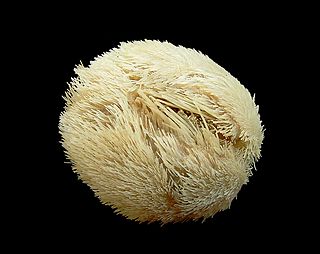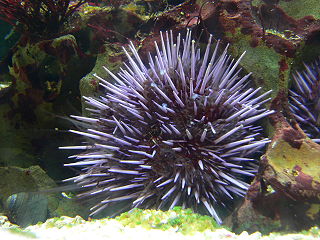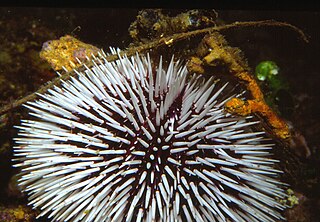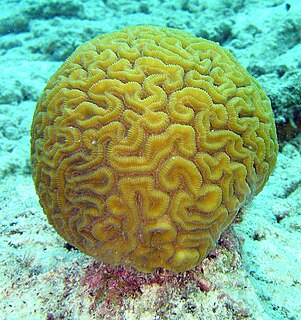| Temnopleuridea Temporal range: Upper Cretaceous–recent | |
|---|---|
 | |
| Microcyphus rousseaui | |
| Scientific classification | |
| Kingdom: | Animalia |
| Phylum: | Echinodermata |
| Class: | Echinoidea |
| Order: | Camarodonta |
| Infraorder: | Temnopleuridea Kroh & Smith, 2010 [1] |
| Families | |
Glyphocyphidae † Contents | |
| Synonyms | |
Temnopleuroida Mortensen, 1942 | |
Temnopleuridea is an infraorder of sea urchins in the order Camarodonta. They are distinguished from other sea urchins by the presence of large fused plates on top of the feeding lantern. The test is usually sculpted to some degree, and has perforated tubercles. [2]
In biological classification, the order is
- a taxonomic rank used in the classification of organisms and recognized by the nomenclature codes. Other well-known ranks are life, domain, kingdom, phylum, class, family, genus, and species, with order fitting in between class and family. An immediately higher rank, superorder, may be added directly above order, while suborder would be a lower rank.
- a taxonomic unit, a taxon, in that rank. In that case the plural is orders.

Sea urchins or urchins are typically spiny, globular animals, echinoderms in the class Echinoidea. About 950 species live on the seabed, inhabiting all oceans and depth zones from the intertidal to 5,000 metres. Their tests are round and spiny, typically from 3 to 10 cm across. Sea urchins move slowly, crawling with their tube feet, and sometimes pushing themselves with their spines. They feed primarily on algae but also eat slow-moving or sessile animals. Their predators include sea otters, starfish, wolf eels, and triggerfish.

The Camarodonta are an order of globular sea urchins in the class Echinoidea. The fossil record shows that camarodonts have been in existence since the Lower Cretaceous.
















